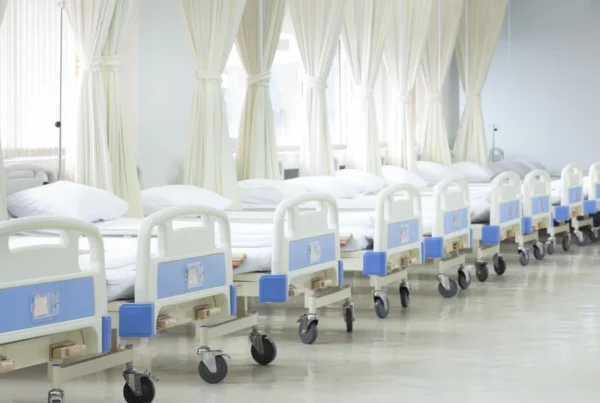
Nurses today are overburdened. They face immense pressure to balance patient care with the administrative demands of managing Durable Medical Equipment (DME). These challenges are not only impacting nurses’ productivity—they are contributing significantly to burnout, a well-documented crisis in the healthcare sector therefore reducing nurse burnout is critical. In recent years nearly 44% of U.S. nurses report experiencing burnout, with 34% considering leaving their current roles (HealthLeaders Media).

The question is: How can we alleviate these stressors and restore the focus of nurses to where it belongs—delivering patient care? The answer lies in the implementation of efficiency-driven technology like better DME management systems, to lift administrative burdens.
Streamlining Processes to Alleviate Administrative Burdens
In traditional healthcare settings, nurses are often forced to navigate fragmented systems when managing DME. This means coordinating with multiple vendors, mapping equipment across inconsistent inventories, and ensuring timely delivery of critical medical devices to patients. The manual nature of these tasks not only opens the door for errors but also consumes a significant amount of time that could be better spent with patients.
According to a report by Beckers, nurses spend approximately 25% of their time on non-patient care tasks such as equipment management and documentation. A streamlined DME management system transforms this process. By automating the ordering, tracking, and delivery of equipment, nurses no longer have to spend valuable hours managing logistics. Instead, they can rely on a single platform that integrates everything—from patient needs assessments to equipment maintenance tracking. This shift allows nurses to operate more efficiently and focus on what matters most: patient care.

Burnout and the Impact on Healthcare
The burden of inefficient DME management is directly linked to high burnout rates among healthcare workers. Burnout does more than affect individual clinicians—it disrupts the overall quality of care and patient outcomes. Approximately 76% of hospital readmissions are potentially avoidable, with delays in equipment delivery contributing to adverse events such as exacerbations of chronic conditions like COPD (Journal of the COPD Foundation).
Improving DME processes is not just a matter of convenience; it’s a critical step toward enhancing patient care. By ensuring that nurses can focus on delivering care rather than juggling administrative tasks, hospitals can reduce burnout, improve staff retention, and ultimately drive better patient outcomes.
The Financial Case for Better DME Management
The inefficiencies in current DME processes come with a hefty price tag. Administrative complexity alone accounts for $265.6 billion of annual healthcare waste. However, hospitals and healthcare organizations can reclaim up to $265 billion annually by simplifying these processes (The Demand for DME Whitepaper).

Nurse turnover due to burnout also has a significant financial impact on healthcare organizations, with costs estimated to range between $37,700 and $58,400 per nurse (Nursing Solutions, Inc., 2021). By implementing streamlined DME management systems that reduce burnout, healthcare facilities can retain their nursing staff, avoid turnover costs, and improve both patient care and financial stability.
A robust DME management system addresses this financial drain head-on by eliminating redundant manual processes, reducing order errors, and streamlining communication between clinical teams and vendors/equipment suppliers. Healthcare providers that adopt such systems report increased operational efficiency and reduced costs. This allows them to reallocate resources more effectively, further mitigating the financial strain caused by inefficiencies.
Reducing Nurse Burnout, One Innovation at a Time
By adopting innovative, streamlined DME management systems, healthcare organizations can significantly reduce the administrative burdens on nurses. Such systems offer a comprehensive solution that allows nurses to manage all aspects of DME within a single platform. This not only eliminates confusion and delays but also fosters an environment where nurses can thrive, ultimately reducing the risk of burnout and enhancing job satisfaction.
The time to act is now. As the demand for healthcare services continues to rise alongside an aging population, hospitals and healthcare organizations must invest in the right solutions that empower their staff and improve patient care.
If you’re ready to explore how a DME management system can transform your healthcare organization, contact Wynne Systems for more insights and solutions.




